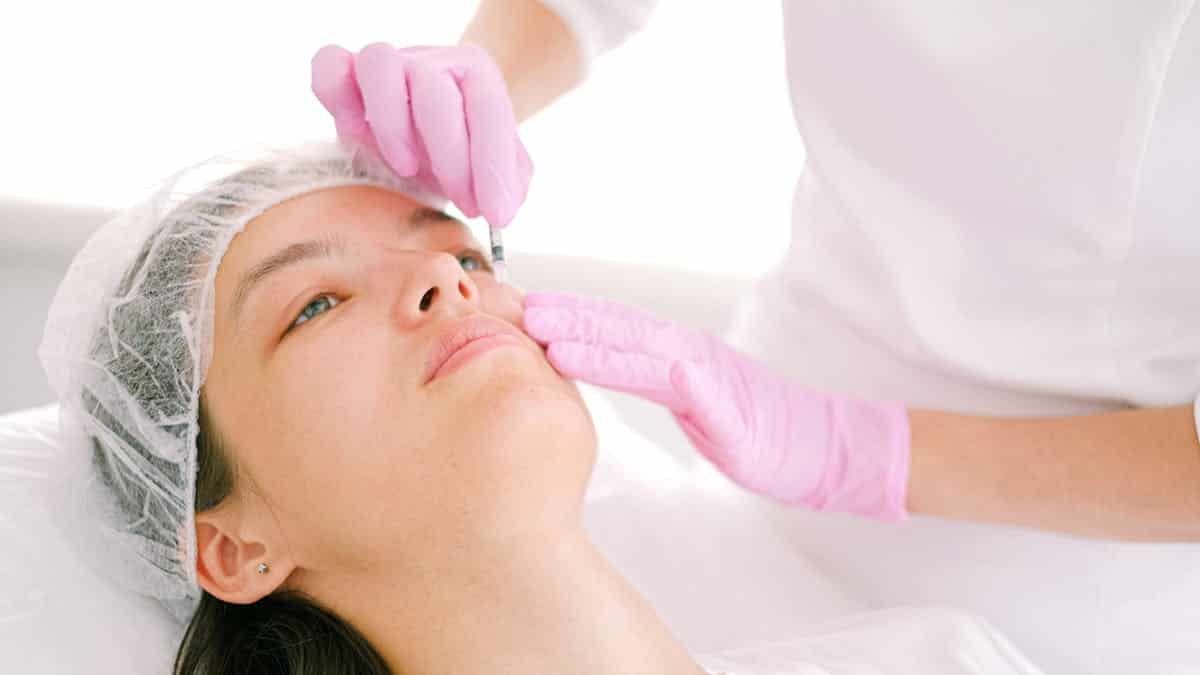Here is your complete guide to bad botox before and after.
Introduction to Bad Botox Before and After
Botox has become a household name in the world of cosmetic enhancements, celebrated for its ability to smooth out wrinkles and provide a more youthful appearance. However, as its popularity has surged, so too have the instances of bad Botox experiences. Understanding the concept of bad botox before and after is crucial for anyone considering this treatment. This article will explore the signs of bad Botox, the causes behind it, and how to prevent and correct these unfortunate outcomes.
In this article, we will delve into:
- The nature of Botox and its intended effects.
- Common signs that indicate a bad Botox experience.
- Real-life examples of bad botox before and after scenarios.
- Solutions for correcting bad Botox results.
- Tips for preventing complications.
- Common Mistakes to Avoid
By the end of this article, you will have a comprehensive understanding of what to look out for when considering your treatments and how to ensure a positive outcome.
Understanding Botox
What is Botox?
Botox, short for botulinum toxin, is a neurotoxic protein produced by the bacterium Clostridium botulinum. It works by temporarily paralyzing muscles, which can reduce the appearance of wrinkles and fine lines. While it is most commonly associated with cosmetic procedures, Botox also has several medical applications.
Common Uses of Botox
Botox is used for various purposes, including:
- Cosmetic Applications:
- Reducing forehead lines.
- Smoothing crow’s feet around the eyes.
- Lifting drooping eyebrows.
- Medical Uses:
- Treating chronic migraines.
- Managing excessive sweating (hyperhidrosis).
- Alleviating muscle spasms.
Understanding these applications helps set realistic expectations about what Botox can achieve.
Signs of Bad Botox
Despite its effectiveness, there are instances where your treatments can go awry. Recognizing the signs of bad botox before and after is essential for addressing issues early on.
Common Symptoms of Bad Botox
- Asymmetrical Facial Features
- One side of the face appears different from the other due to uneven injections.
- Drooping Eyelids (Ptosis)
- Difficulty in fully opening the eyes, leading to a tired or sad appearance.
- Uneven Smiles
- One side of the mouth may droop or not move as much as the other side.
- Muscle Weakness or Paralysis
- Weakness in areas far from the injection site, affecting facial expressions or even swallowing.
| Symptom | Description |
|---|---|
| Asymmetry | One side of the face appears different. |
| Drooping Eyelids | Difficulty in opening eyes fully. |
| Uneven Smile | One side of the mouth droops. |
| Muscle Weakness | Weakness in areas far from injection site. |
Real-Life Examples
Many individuals share their experiences with bad botox before and after results on social media platforms and forums. These testimonials often highlight:
- Emotional Distress: Feelings of embarrassment or anxiety due to unexpected outcomes.
- Social Impact: Avoiding social situations because of perceived flaws.
These stories serve as cautionary tales for potential clients considering treatments.
Causes of Bad Botox
Understanding what leads to bad results can help you make informed decisions when seeking treatment.
Improper Technique
One major cause of bad Botox outcomes is an improper injection technique. This can occur when:
- The practitioner lacks sufficient training or experience.
- The wrong injection sites are targeted.
Incorrect Dosage
Administering too much or too little Botox can lead to undesirable effects:
- Over-injection may cause excessive paralysis, leading to a frozen appearance.
- Under-injection may result in insufficient wrinkle reduction.
Botox Quality
The quality of the product used is crucial:
- Counterfeit Products: Some providers may use unapproved or counterfeit versions of Botox, which can lead to serious complications.
Choosing a reputable clinic that uses FDA-approved products is essential for safety and efficacy.
Before and After: The Transformation
Visual evidence plays a significant role in understanding bad botox before and after scenarios.
Visual Evidence
Images showcasing bad outcomes often reveal stark contrasts between expected results and reality:
- Before: A person may have natural wrinkles or fine lines.
- After: The same individual might exhibit uneven features or drooping eyelids due to poor application.
Emotional Impact
The emotional toll of experiencing bad treatment can be profound:
- Self-Esteem Issues: Many individuals report decreased confidence following unsatisfactory results.
- Mental Health Concerns: Anxiety and depression can arise from feeling dissatisfied with one’s appearance.
Correcting Bad Botox
If you find yourself facing issues from a bad treatment, there are options available for correction.
Possible Solutions
- Additional Treatments
- In some cases, additional injections may help balance out asymmetry or correct drooping features.
- Waiting It Out
- Since Botox effects are temporary (lasting three to six months), sometimes simply waiting for it to wear off is an option.
- Seeking Professional Help
- Consulting with a qualified practitioner who specializes in corrective procedures can provide tailored solutions.
| Correction Method | Description |
|---|---|
| Additional Treatments | New injections to balance effects. |
| Waiting It Out | Allowing time for effects to naturally fade. |
| Professional Help | Consulting an expert for tailored solutions. |
When to Seek Help
It’s important to know when to seek medical attention:
- If you experience severe side effects such as difficulty breathing or swallowing.
- If facial features become significantly asymmetric or if you feel unwell after treatment.
Prevention Tips
Preventing complications starts with making informed choices about your treatment provider and preparation process.
Choosing the Right Provider
When selecting a practitioner for your treatment, consider:
- Credentials: Ensure they are licensed and trained specifically in cosmetic injectables.
- Experience: Look for someone with extensive experience in administering Botox safely and effectively.
Pre-Treatment Considerations
Before getting Botox, ask yourself (and your provider) these questions:
- What are your qualifications?
- Can you show me before-and-after photos from previous clients?
- What should I expect during and after the procedure?
Common Mistakes to Avoid When Considering Bad Botox Before and After
When it comes to treatments, avoiding common mistakes is crucial to achieving the desired results and preventing undesirable outcomes. Here are some key mistakes to steer clear of:
Choosing an Under-Qualified Provider
One of the most significant mistakes individuals make is opting for an under-qualified injector. While it may be tempting to choose the cheapest option, the skill and experience of the injector are vital. Poorly administered Botox can lead to:
- Incorrect Muscle Paralysis: Wrong placement can result in unintended facial expressions.
- Frozen Appearance: Over-injection can cause a stiff, unnatural look.
- Safety Risks: Inexperienced injectors may not recognize complications promptly.
Overinjection
Many first-time patients believe that more Botox will yield better results. However, overinjection can lead to a frozen face, droopy eyebrows, or even ptosis (drooping eyelids). It’s essential to start with a conservative approach:
- Less is More: Begin with fewer units and assess the results before adding more.
- Consultation: Discuss your desired outcomes with your injector to determine an appropriate dosage.
Ignoring Pre-Treatment Guidelines
Several factors can affect the outcome of your treatment. Ignoring pre-treatment guidelines can lead to complications:
- Avoid Alcohol: Consuming alcohol 24 hours before treatment can thin your blood and increase bruising risk.
- Stop Blood Thinners: If you’re on blood thinners, consult with your doctor about stopping them several days prior to your appointment.
| Pre-Treatment Guidelines | Importance |
|---|---|
| Avoid Alcohol | Reduces bruising risk. |
| Stop Blood Thinners | Minimizes swelling and bruising. |
Not Following Post-Treatment Care
After receiving your treatment, specific care instructions are crucial for optimal results:
- No Rubbing or Massaging: Avoid touching or massaging the treated areas for at least four hours post-treatment to prevent product migration.
- Limit Physical Activity: Refrain from vigorous exercise on the day of treatment to reduce the risk of bruising.
Going to Botox Parties
Parties may seem like a fun way to get treatments at a discount, but they pose significant risks:
- Lack of Professional Oversight: These events often feature unqualified injectors who may not have proper training or experience.
- Increased Risk of Complications: The informal setting can lead to unsanitary conditions and poor injection techniques.
Neglecting Follow-Up Appointments
After receiving Botox, follow-up appointments are essential for assessing results and making adjustments if necessary:
- Monitor Results: Keep track of how your face responds over time.
- Communicate Concerns: If you notice any issues, such as asymmetry or drooping, contact your provider promptly.
By avoiding these common mistakes, you can significantly improve your chances of having a positive experience with these treatments and achieve the results you desire.
Read Also: Acne Facial Before After.
FAQs about Bad Botox Before and After
Here are some frequently asked questions regarding bad botox before and after experiences:
What are the common signs of botched Botox?
Look out for asymmetry, drooping eyelids, uneven smiles, and muscle weakness.
Read Also: Chin Filler Before After.
How can I prevent Botox complications?
Choose a qualified provider, ask questions before treatment, and follow pre-treatment guidelines closely.
Read Also: Vitamin C Serum Before After.
Can botched Botox be corrected?
Yes, options include additional treatments or waiting for effects to wear off; consult a professional for tailored solutions.
Read Also: Coconut Oil Hair Food.
What should I do if I experience side effects at home?
Monitor your symptoms closely; if they worsen or become severe, seek immediate medical attention.
Read Also: Lip Flip with Botox.
Conclusion
In conclusion, understanding bad botox before and after scenarios is vital for anyone considering this popular cosmetic treatment. By recognizing potential signs of complications, knowing how to choose a qualified provider, and being aware of corrective options available if things go wrong, you can make informed decisions about your aesthetic goals. Always prioritize safety over aesthetics when it comes to cosmetic procedures—your well-being should come first!
Read Also: Thick Hair vs Thin Hair.

